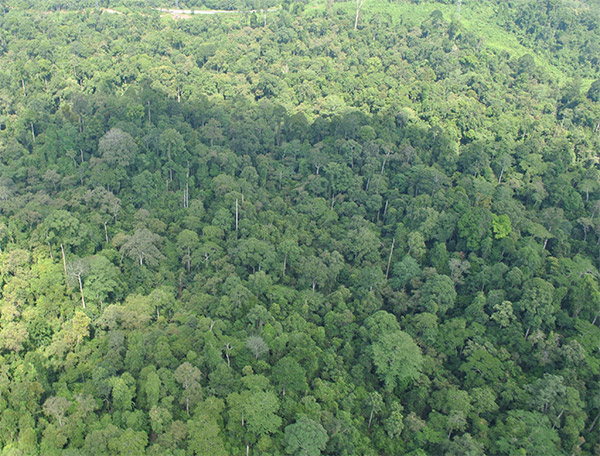KTSP has adopted the standard approach for yield regulation based on the combination of Area Control and Forest Growth. Simply stated, this approach means harvesting should not exceed the calculated area per year, and should harvest only within range of net growth. The calculated area per year derived from dividing the total production area (50,000 ha) by a nominated cutting cycle of 20 years, thus resulted in an annual harvesting area averaging 2,500 ha.
To ensure biological sustainability of the forest, an Annual Allowable Cut (AAC) of volume were calculated. In general, the calculation is guided by the principle that the harvesting does not exceed the growth of the forest. Therefore, the calculation is derived from two sources of data namely; ‘Growth’ data obtain from PSP and ‘Stocking’ data from the SMI study.
Consequently, it was calculated that the SLFR have a total growth of 5.73 m3/ha/year of which 1.95 m3/ha/year are of harvestable diameter classes. After factor in the operational constraint and defect at 50% and 5% respectively, the AAC is calculated at 18.55 m3/ha/year or a total of 46,375 m3/year.
The ‘Total Growth’ to ‘Harvest’ ratio are factored at 0.84, or net growth of 84% per year, suggesting that SLFR is managing its harvesting operation according to the sustainable forest management principle.
The ultimate goal would be to have the entire FMU fully regulated for optimal timber production, including those compartments that are currently considered unproductive. This will also eventually be shown in a less-fluctuating cash flow. Therefore, for this planning period the annual allowable cut is calculated at 46,375 m3/year, and the total harvest for the entire planning period should not exceed 463,750 m3.
Aerial view of SLFR Current Stocking

Aerial view of SLFR Current Stocking

